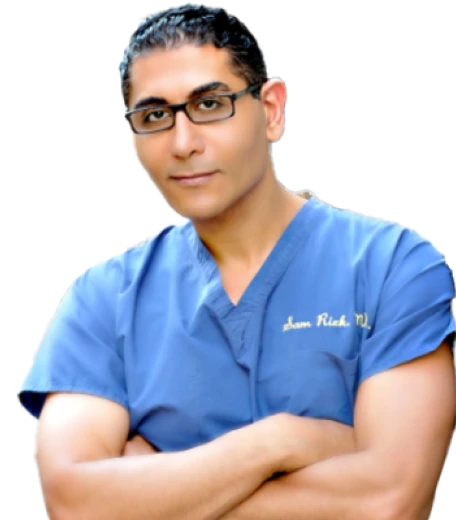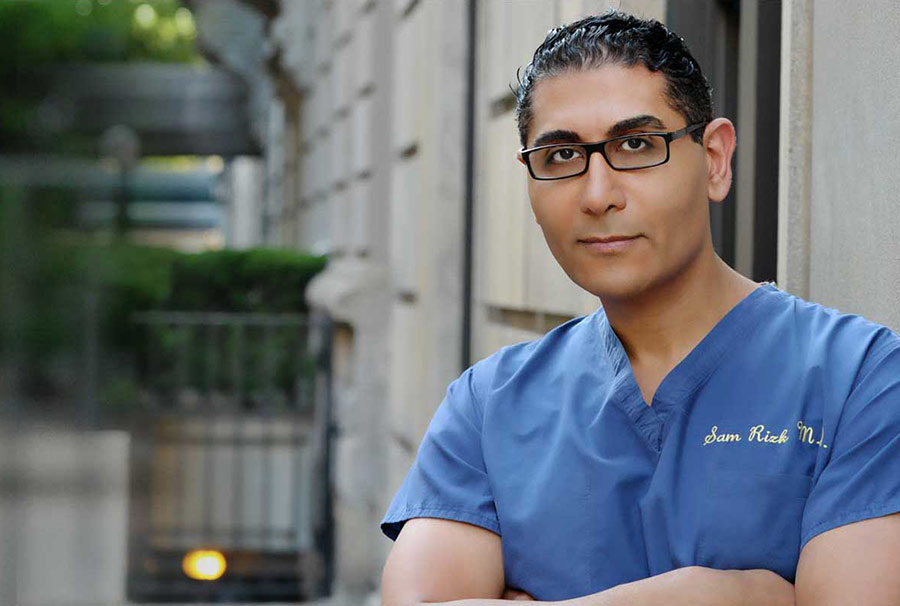One of the most popular sought-after solutions for those aiming to dramatically reverse the signs of aging is a facelift. For some patients, especially those who performed their first facelift in their 40’s, other questions arise: should I have another facelift? How about a third one?
At the heart of cosmetic surgery, there is a balance between patients’ desires and practicality and safety exhibited by your facial plastic surgeon. Drawing insights from Dr. Rizk’s many years of experience, we explore the pros and cons with multiple facelifts.
Why People Opt for Facelifts
The decision to undergo a facelift often comes from the desire to look as young as one feels. When age-related changes to your face cannot be addressed well enough with injectables and lasers, patients start thinking of a surgical procedure. Individuals typically seek facelifts to restore facial harmony, tighten sagging skin, and diminish the appearance of deep wrinkles and folds.
The Reality of Multiple Facelifts
Facelifts, while transformative, do not halt the aging process. Typically, the results of a primary facelift (the first facelift surgery that was performed) can last between ten years to fifteen years, after which signs of aging may reappear. The notion of undergoing multiple facelifts is not medically unfounded; in fact, secondary or even tertiary facelifts are possible. In some cases, patients who are unhappy with the results of their first facelift – usually when they feel that the change is too minor – opt for a second surgery after a couple of years, when they see the full effect of their surgery. In case the surgeon made a mistake such as asymmetry, patients consider a corrective procedure. However, each subsequent surgery presents its own set of challenges and considerations.
Scientific and Surgical Considerations
The feasibility of multiple facelifts hinges on several factors, including skin elasticity, the patient’s overall health, and the condition of facial tissues. An experienced and skilled surgeon will emphasize the importance of realistic expectations. The skin’s ability to recover and the diminishing returns of each additional lift must be carefully weighed. Moreover, the surgical area changes with each procedure—the presence of scar tissue, altered anatomy, and the patient’s healing capacity all play critical roles in determining the viability of another facelift.
Why People Have More Than One Facelift
The decision to undergo additional facelifts often stems from the desire to maintain a youthful appearance as one ages. Lifestyle changes, advancements in surgical techniques, and the psychological boost from previous successful surgeries can also motivate individuals to seek further enhancements. In New York City, where the standards for beauty and self-presentation can be particularly high, the demand for facelift revisions reflects a broader cultural trend toward maintaining an ageless persona.
How Many Facelifts Can You Have, Realistically?
While there is no definitive limit to the number of facelifts one can have, each case must be approached with caution, expertise, and a clear understanding of the individual’s goals and the realistic outcomes of surgery.
In NYC, the choice of surgeon is paramount – a skilled, experienced facial plastic surgeon can provide the guidance and surgical excellence needed to navigate the aging journey gracefully, whether through a single facelift procedure or multiple refinements over time.
Consult with Dr. Rizk, the best facial plastic surgeon in NYC if you are interested in rejuvenating your appearance post-facelift. He will advise on the possibilities and longevity of results.












